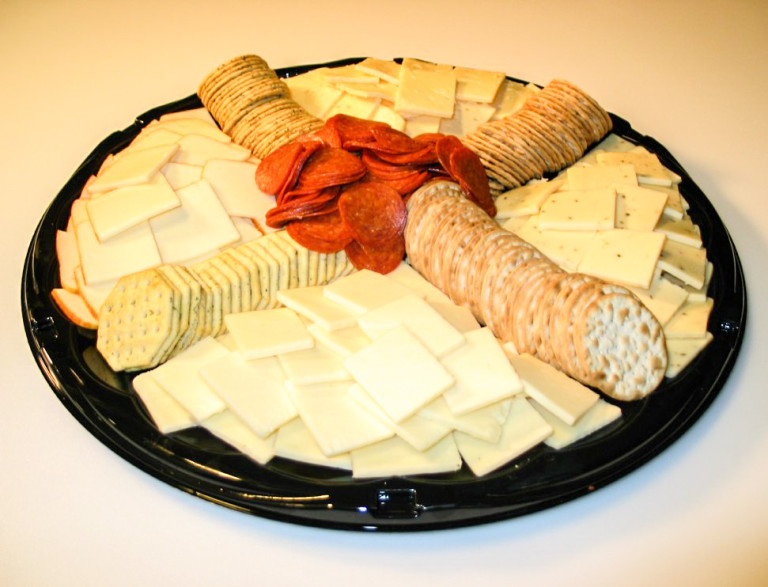
Remember when party food was worth the wait? Back in the 1970s, hosts spent hours in the kitchen and nobody complained about the effort. Swedish meatballs simmered all afternoon while hostesses carefully formed cheese logs with nut-coated edges. Friends crowded around bread bowls filled with spinach dip, tearing off chunks of sourdough to scoop up every last bit.
Those appetizers brought people together in ways chips and salsa never could.
20. Hawaiian Cheese Log

Mid-century America couldn’t get enough of the Hawaiian Cheese Log when tropical themes dominated suburban entertaining. This party centerpiece combined cream cheese, crushed pineapple, and chopped nuts rolled in coconut, taking just 20 minutes to prepare. The sweet-savory profile perfectly matched the era’s fascination with exotic flavors, appearing in countless community cookbooks with various adaptations. Hostesses typically arranged crackers in a starburst pattern around these logs, creating an impressive display that belied its simple preparation. Today, this retro classic offers a glimpse into an era when adding pineapple to anything instantly made it sophisticated enough for the neighborhood cocktail party.
19. Swedish Meatballs

Dating back approximately 400 years, Swedish meatballs allegedly returned with King Charles XII from his Turkish travels. The distinctive blend of ground beef, pork, onions, allspice, and white pepper created an immediately recognizable aroma at 1970s gatherings. Convenience-minded hosts often substituted cream of mushroom soup for traditional gravy, serving them with frilly toothpicks from chafing dishes. While IKEA later popularized these globally, authentic versions remain fixtures at Scandinavian holiday tables, particularly in Christmas Julbord spreads. At modern parties, these savory bites still disappear first—proving that certain flavor combinations transcend decades of changing food trends.
18. Clams Casino

When the Narragansett Pier Casino introduced Clams Casino in the late 1800s, America’s wealthy immediately embraced the luxurious appetizer. Chefs prepared these by topping fresh littleneck clams with breadcrumbs, butter, garlic, parsley, bacon, and bell peppers before broiling to golden perfection. Regional variations developed across the Northeast, with New Englanders preferring salt pork while Mid-Atlantic versions featured smoky bacon. Smaller 2-inch clams remained the standard, ensuring proper cooking and elegant presentation. Their popularity surged during Prohibition when bold flavors helped mask questionable spirits. Few appetizers can claim a century-long legacy, yet these briny, bacon-topped bivalves continue delivering the same sophisticated pleasure that captivated Gilded Age diners.
17. Crab Rangoon

Trader Vic’s invented Crab Rangoon in the 1950s, capitalizing on America’s post-war fascination with exotic cuisines. These crispy wonton parcels filled with cream cheese, crab meat, and green onions became fixtures on Chinese-American menus despite having no authentic Asian roots. Careful sealing with water prevented filling leakage during frying, creating the crucial textural contrast between shatteringly crisp exterior and molten center. A package of wonton wrappers typically yielded 16-20 pieces—never enough to satisfy demand. Biting into one today connects you to America’s longstanding tradition of culinary reinvention, where authenticity takes a backseat to deliciousness.
16. Pigs in a Blanket

Following World War II, Pigs in a Blanket emerged as the ultimate 1950s convenience appetizer. Simply wrapping mini sausages in refrigerated dough created instant party fare requiring minimal culinary skill. Home economists heavily promoted these in women’s magazines as perfect showcases for new packaged products. Betty Crocker cookbooks cemented their popularity, making them household staples across America. A single tube of crescent dough produced approximately 24 pieces, though shrewd hosts always prepared extra. Six decades later, these humble two-bite wonders continue outlasting countless food trends, demonstrating that sometimes simplicity trumps sophistication at the appetizer table.
15. Spinach Dip in a Bread Bowl

The casual entertaining revolution of the mid-1970s gave birth to Spinach Dip in a Bread Bowl. This interactive appetizer combined frozen spinach, cream cheese, sour cream, mayonnaise, and dry soup mix inside a hollowed round loaf. Instant soup packets provided effortless seasoning, perfectly matching the era’s embrace of convenience products. Yielding roughly 3 cups, this shareable dip encouraged guests to tear pieces from the container itself. Watch any gathering where this appears today and the same pattern emerges—polite initial sampling gradually evolving into strategic positioning near the increasingly soggy bread bowl, where the best-flavored pieces always disappear first.
14. Egg Rolls

Chinese-American restaurants transformed traditional spring rolls into egg rolls during the 1930s, creating a heartier adaptation for American palates. The distinctive wheat flour wrappers filled with cabbage, carrots, and protein became immediate hits, eventually appearing in 70% of takeout orders nationwide. By the 1950s, frozen versions entered supermarkets, bringing this restaurant favorite into home kitchens. Typically served 2-3 per order, regional variations emerged—coastal areas favoring seafood while midwestern versions emphasized pork. The next time you instinctively order egg rolls, you’re participating in a century-old culinary adaptation that perfectly demonstrates America’s talent for reinterpreting global cuisines.
13. Cheese Puffs

Julia Child’s influential cooking shows during the 1960s introduced American hosts to Cheese Puffs (gougères). These sophisticated bites featured choux pastry combined with Gruyère or Emmental cheese, creating airy pockets that impressed cocktail party guests. Unlike most baked goods, these contained no leavening agents—only steam from the high-moisture dough created their characteristic hollow centers. Professional caterers quickly adopted them for upscale events, particularly wine tastings where they complemented various vintages. Today, mastering these delicate puffs provides entertainers with a timeless party trick that simultaneously satisfies cheese lovers, impresses culinary enthusiasts, and signals that you absolutely went to extra effort for your guests.
12. Chicken Liver Pate

The continental cuisine boom of the 1960s revived interest in Chicken Liver Pâté as sophisticated American hosts embraced European entertaining traditions. This elegant spread transformed humble livers through careful sautéing with aromatics before blending with butter and cream—often up to 30% of the total volume. Fastidious preparation included pressing through sieves for the silky texture considered essential to proper pâté. Health concerns eventually reduced its ubiquity, yet it never disappeared completely from upscale gatherings. Serve this alongside a small glass of sherry and observe as even self-proclaimed liver-haters return for additional samples—the ultimate testimony to how proper technique transforms humble ingredients into luxury.
11. Deviled Ham Spread

William Underwood Company first introduced canned Deviled Ham in the 1870s, distinguished by its spicy seasoning and iconic paper-wrapped tins. Home cooks frequently created their own versions using leftover holiday ham, reflecting the era’s waste-nothing approach to cooking. This versatile spread served multiple roles—sandwich filling, cracker topping, or stuffing for celery and deviled eggs. With approximately 2 cups per batch and week-long refrigerator life, it provided ideal make-ahead convenience for entertaining. Modern hosts rediscovering this vintage spread find its practical appeal remains unchanged—proving that sometimes the most effective party solutions have been hiding in plain sight, nestled between vintage recipes our grandmothers knew by heart.
10. Cucumber Sandwiches

British tea traditions brought Cucumber Sandwiches to American social gatherings, particularly ladies’ luncheons and garden parties. Proper preparation demanded cucumbers sliced paper-thin (1/16 inch), crustless white bread, and just enough butter to prevent sogginess—seemingly simple yet requiring considerable attention to detail. Traditional recipes called for salting and draining cucumber slices before assembly to prevent the dreaded soggy sandwich syndrome. A standard loaf produced approximately 24 finger sandwiches when cut into triangles or rectangles. Include these at your summer gathering to discover why they’ve persisted for generations—when temperatures rise, nothing replaces the simple refreshment of cool cucumber against soft bread.
9. Rumaki

Polynesian-themed restaurants introduced Rumaki in the mid-1940s as supposedly authentic island cuisine that actual Pacific Islanders would never recognize. These clever appetizers wrapped chicken livers and water chestnuts in bacon before broiling, following a 30-minute soy-ginger-brown sugar marinade. Their popularity peaked during the 1950s tiki craze when suburban homes featured bamboo-decorated basement bars and tropical cocktails. Standard recipes yielded approximately 24 pieces—perfect for Mai Tai-sipping guests wearing Hawaiian shirts. Resurrect these for your next gathering and you’ll instantly transport guests to a time when culinary adventure meant wrapping ingredients in bacon and assigning exotic-sounding names—a strategy that remains surprisingly effective decades later.
8. Stuffed Celery

Depression-era cookbooks from the 1930s first documented Stuffed Celery as an economical yet presentable addition to relish trays. This practical appetizer utilized celery’s natural channel to hold cream cheese mixtures—sometimes enhanced with pimentos or blue cheese for adults, peanut butter for children. During wartime rationing, these stretched limited ingredients into company-worthy offerings. Cutting stalks into 3-inch segments created manageable portions that held their shape when passed around the party. The next time you need a quick appetizer solution, remember this enduring classic that proves sometimes the most reliable party foods aren’t flashy showstoppers but practical standbys that have satisfied guests for generations.
7. Oysters Rockefeller

Chef Jules Alciatore created Oysters Rockefeller at Antoine’s Restaurant in 1899 as an ingenious response to a French snail shortage. The decadent dish—named after America’s wealthiest man—featured oysters topped with a vibrant green mixture of spinach, herbs, butter, and breadcrumbs. While the original recipe remains secret, most versions include anise-flavored spirits for the distinctive flavor profile. The restaurant has served over 4 million orders since their creation, typically using 2-3 inch oysters for optimal cooking. Order these at a historic restaurant today and you’re experiencing one of gastronomy’s most enduring creations—a century-old preparation that continues delivering the same luxurious experience that originally captivated Gilded Age diners.
6. Deviled Crab

Resourceful coastal communities developed Deviled Crab in the late 19th century to extend precious crabmeat while maintaining elegant presentation. The savory mixture combined lump crabmeat with breadcrumbs, egg, mayonnaise, mustard, and seasonings, then baked in crab shells or individual ramekins. Regional recipes often included cayenne or hot sauce, reflecting Southern preference for heat. Standard portions of 6 ounces created substantial appetizers that sometimes served as light entrées. The dish’s popularity spread northward as refrigerated transportation expanded seafood availability beyond coastal areas. Today’s seafood enthusiasts who sample this historic preparation are tasting evidence of America’s first seafood revolution—when improved shipping transformed regional specialties into national favorites.
5. Jellied Tomato Aspic

Mid-century entertaining showcased Jellied Tomato Aspic as the ultimate demonstration of culinary skill and modern food technology. This striking creation combined tomato juice, unflavored gelatin, and seasonings into molded forms that demonstrated mastery of temperature and timing. Many versions suspended celery, olives, or shrimp within the crimson gelatin for dramatic effect. Individual 4-ounce decorative molds created elegant portions with intricate surface patterns. Home economists prominently featured these in cooking demonstrations, emphasizing their make-ahead convenience. While few modern hosts serve aspic today, creating one offers a fascinating glimpse into mid-century food culture—a wobbly time capsule capturing America’s fascination with convenience foods, visual presentation, and gelatin technology.
4. Pickle Wraps

Midwestern community cookbooks first documented Pickle Wraps during the 1950s as reliable potluck contributions. These no-cook appetizers featured dill pickles spread with cream cheese, wrapped in ham or corned beef, then sliced into rounds. Regional nicknames like “Minnesota sushi” or “Polish roses” reflected their widespread popularity across Middle America. The recipe worked best with ¾-inch pickles to achieve optimal flavor balance in each bite. The contrasting flavors—briny pickle, creamy cheese, savory meat—created an addictively satisfying combination that transcended their humble ingredients. Bring these retro bites to your next gathering and watch as initial skepticism transforms into curious sampling, followed by return visits to the platter until only crumbs remain.
3. Cheese and Cracker Trays

Though humans have paired cheese with bread for millennia, the formal Cheese and Cracker Tray emerged during mid-century America when cocktail entertaining became suburban standard practice. Hospitality guides recommended selecting 3-4 varieties representing different textures and milk types to accommodate diverse preferences. During the 1970s, accompaniments expanded beyond crackers to include nuts and dried fruits as international influences broadened American palates. Specialty cheese shops proliferated in urban centers, introducing options beyond processed supermarket varieties. Room temperature service became recognized as essential for proper flavor development, though many hosts neglected this crucial detail. This enduring appetizer has survived countless food trends through one simple truth—few culinary pleasures match finding your perfect cheese-to-cracker ratio and returning for additional samples. If you remember this and other kinds of appetizers from the 1970s, then this is probably what your childhood was like back then.
2. Beef Tongue Canapes

European culinary traditions brought Beef Tongue Canapés to American entertaining during the late 19th century when organ meats featured prominently in sophisticated dining. Preparation required simmering a whole tongue with aromatics for 3-4 hours until tender, then peeling and slicing paper-thin for elegant presentation. Despite its labor-intensive preparation, tongue remained economical, making it accessible for aspirational hosts. Traditional accompaniments included zesty condiments like horseradish cream or mustard to balance the rich meat. The appetizer gradually disappeared from mainstream tables as post-war America developed aversions to organ meats. Today’s culinary adventurers who prepare tongue connect to a vanishing culinary tradition that valued resourcefulness alongside flavor, transforming humble ingredients into expressions of hospitality.
1. Stuffed Grape Leaves

Archaeological evidence traces Stuffed Grape Leaves back 2,000 years in the Eastern Mediterranean before immigrant communities introduced them to American tables. These meticulously crafted parcels wrap grape leaves around rice, pine nuts, herbs, and sometimes ground meat. Traditional preparation required blanching fresh leaves until pliable, though commercial jarred varieties eventually simplified the process. Properly rolled examples measure approximately 2 inches, creating perfect two-bite portions. Their popularity surged during the 1960s as American interest in global cuisines expanded beyond European traditions. Making these ancient bundles today connects you to one of the world’s oldest continuously prepared finger foods—a remarkable example of culinary tradition that has satisfied guests for millennia through its perfect combination of portable design and complex flavors.





















